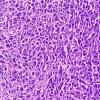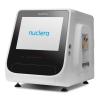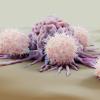Using nanoparticles to bind molecules that can unleash and stimulate immune cells, US researchers found they could more effectively trigger the body’s defence systems against cancer in laboratory studies.

The researchers believe that their findings offer a promising new nanotechnology-based delivery method for an immunotherapy combination. Andrew Z Wang, Associate Professor at the University of North Carolina (UNC) School of Medicine, was one of the research team.
He said: “Our study suggests that if you’re able to present two different therapeutics at the same time to immune cells to help them fight cancer, the effect is greater.
“It’s difficult to deliver them at the same time unless you
tie them together, and a nanoparticle is one great way to tie the two together.”
T-cells can fight and kill tumours, but they have regulatory signals that limit their effectiveness.
Treatments called checkpoint inhibitors have been developed to “release the brakes” on immune cells, and have been shown to be a powerful tool to fight lung cancer and melanoma for a subset of patients. Clinical trials have been launched to test combining checkpoint inhibitors that release the immune system’s brakes with treatments designed to send “green light” signals to boost the immune response.
UNC researchers developed a mechanism that combines these two compound types on a single nanoparticle with the goal of producing better results. Their research has been published in the journal Advanced Materials.




